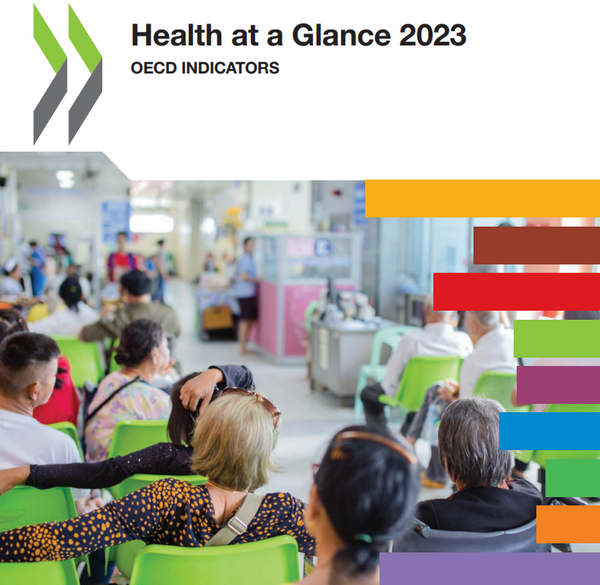Korean physicians treat more patients per capita than any other OECD country, a recent report revealed.

According to the "Health at a Glance 2023" published by the Organisation for Economic Co-operation and Development (OECD), a Korean doctor saw an average of 6,113 patients annually in 2021, the highest among the 32 member countries with available statistics.
The figure was 3.4 times higher than the OECD average of 1,788 patients per doctor in 2021. Following Korea, Japan had the next highest number of consultations per doctor at 4,288, while Greece had the fewest at 428.

A debate surrounds the high patient load for Korean doctors, with some attributing it to a shortage of healthcare professionals and patients seeking treatment or prescriptions from multiple medical institutions within a short timeframe, akin to shopping.
According to the same OECD data, on average, a patient in Korea sees 15.7 doctors per year, which is 2.6 times higher than the average of 6.0 among the 32 countries.
In contrast, some argue that the number of visits to clinics and hospitals is overwhelmingly high in Korea because of the nation's exceptional accessibility to medical care and low consultation fees compared to other OECD countries.
Yet, the OECD report lacks supporting data for these claims, such as waiting times for surgeries or appointments, as Korea is either not included or not surveyed in these statistics.
Nonetheless, some argue that Korea's ninth-place ranking in satisfaction with the quality and availability of medical services among 38 countries raises questions. With 78 percent of citizens content with the current state of healthcare services, this perspective suggests that a shortage of doctors may not be the primary issue.
The recent OECD health report has fueled the ongoing debate between the government and the doctor community regarding the expansion of the medical school enrollment quota and the establishment of new medical schools to save essential medical care.
However, the medical community has warned that if the government unilaterally increases the number of doctors, it will have no choice but to follow in the footsteps of the collective action in 2020.
Korean antibiotic prescriptions still above OECD average
The OECD report also found that antibiotic prescriptions in Korean medical institutions have decreased compared to the past but are still higher than in most OECD countries.
In 2021, Korea's antibiotic use was at 16 defined daily doses (DDP) per 1,000 people, 2.9 DDP above the OECD average of 13.1.
While Korea has reduced its antibiotic prescriptions by 34.2 percent during the past decade, from 24.3 DDP in 2011 to 16 DDP in 2021, the country's prescription volume still remains higher than that of most OECD nations.
The OECD report emphasized the need for antibiotics to be prescribed based on objective evidence to prevent resistance.
Korea's air pollution-related deaths 1.5 times higher than the OECD average
The report also outlined that deaths due to air pollution in Korea are 1.5 times the OECD average.
In 2019, there were 42.7 deaths per 100,000 people in Korea due to air pollution, significantly higher than the OECD average of 28.9 and six times higher than countries with the lowest rates, like New Zealand, Sweden, and Finland.
Over the past two decades, air pollution-related deaths have decreased by an average of 32 percent across most OECD countries. However, in Korea, these deaths have increased by 20 percent. Korea is among six countries, including Japan, Costa Rica, Chile, and Mexico, where deaths related to air pollution have increased.
Extreme climate-related damages are escalating. The population affected by heatwaves in the OECD has risen from 21.6 percent in 2000-2004 to 29.2 percent in 2017-2021. During the same period, the number of heatwave victims in Korea surged from 18.3 percent to 60.1 percent.

